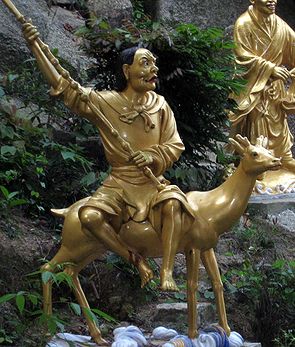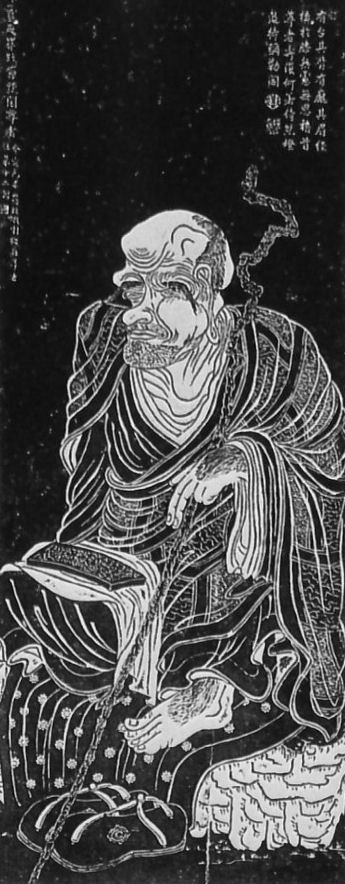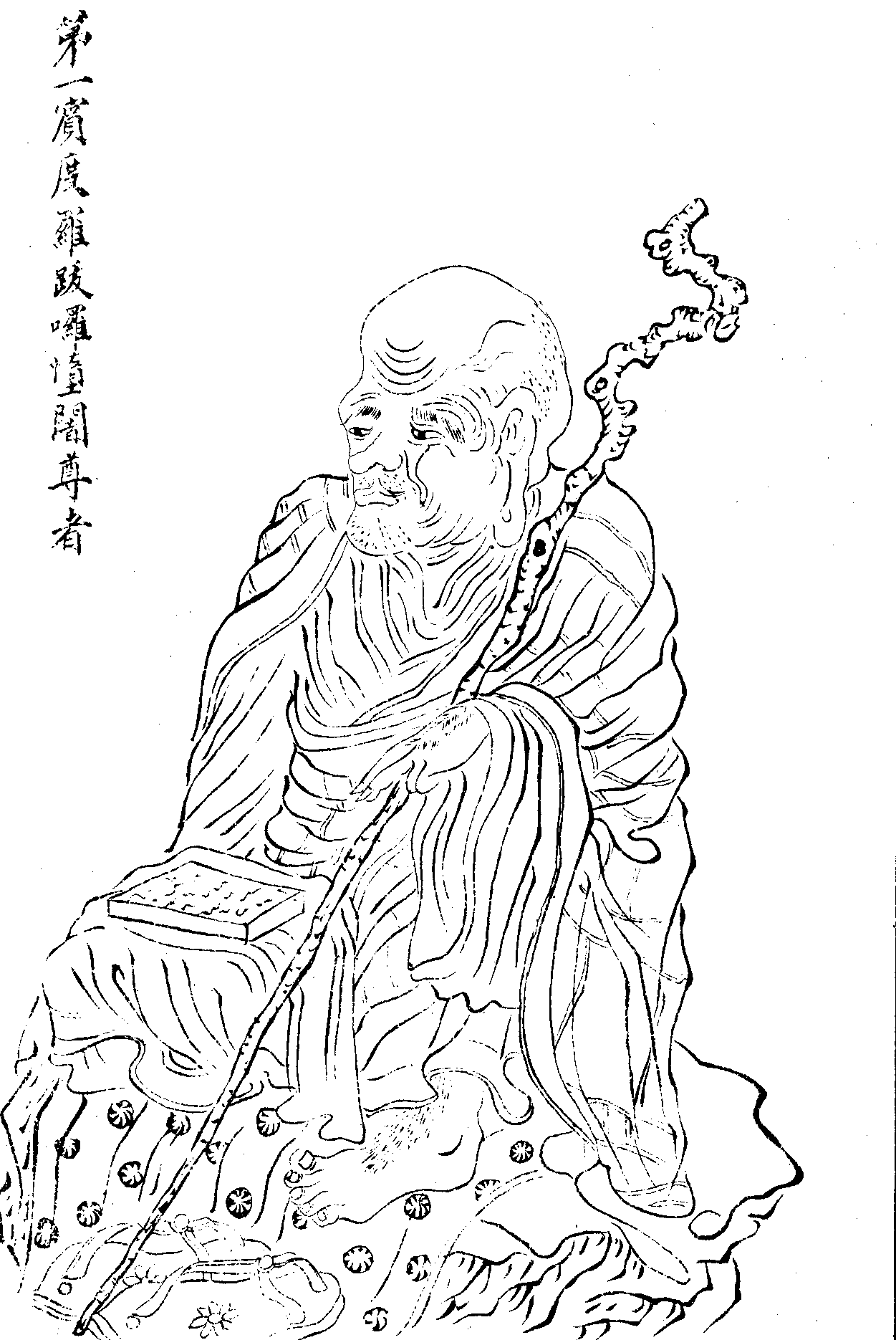
|
Go to
Jordan’s main page,
China Resources main page,
Eighteen Arhats main page, Next Arhat. |
Content Created: 2007-03-23 File last modified: Go to Arhat Number 1 2 3 4 5 6 7 8 9 10 11 12 13 14 15 16 17 18 |

 憍賞彌(梵語: Kauśāmbī,巴利語: Kosambī),又譯拘睒彌、拘舍彌,印度古代城市。在佛教歷
憍賞彌(梵語: Kauśāmbī,巴利語: Kosambī),又譯拘睒彌、拘舍彌,印度古代城市。在佛教歷
In the Indian city of Jūshè-mí 拘舍弥 or Jiāoshǎng-mí <<憍赏弥>> (Sanskrit: Kauśāmbī), there dwelt a man named Báluō-duò 跋罗堕. Báluó-duò was of noble caste and became a high official in Jūshè-mí. Báluó-duò was a very persuasive man, and it was said of him that when anything needed to be done in the city, it was Báluó-duò who could persuade all the right people to get it done.
But in a prior incarnation he had been a man of wickedness and unfiliality. For this he had suffered in purgatory for many years, eating bricks and stones. As a result, in his new incarnation he always had a skinny and careworn appearance, despite his high birth.

Báluó-duò became a follower of the Buddha, and he often remained in the woods in the company of animals, who loved him very much. There he meditated a great deal, which of course gradually gave him supernatural powers. He could fly through the air like his friends, the birds. And his voice could be as loud as the roars of his friends, the lions.
At length, riding astride a deer, he returned to the palace of Jūshè-mí where he had served all those years as a high official. There he persuaded the king to abdicate his throne, and follow him to become a disciple of the Buddha.
Today he is usually represented riding this deer, and he is therefore called “The Arhat Who Rides a Deer.” He is also often shown with an open book on one knee and a mendicant's staff at his side.
In Japan, where his name is rendered Binzuru 賓頭盧, people often repeat an old Chinese tale which says that he was very good at performing magic and was not above doing so in public, at one point levitating in order to retrieve a valuable begging bowl that a rich merchant had mounted at the top of a pole to see which monk could jump the highest. The Buddha reprimanded him for this exhibitionism and forbade the entire sangha from preforming public miracles (which is why to this day any levitating done by Buddhis priests must be done in secret).
He is said to have had 1,000 lesser arhats under his authority.
